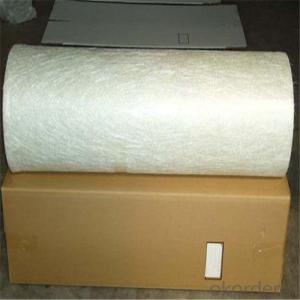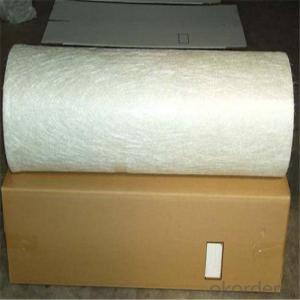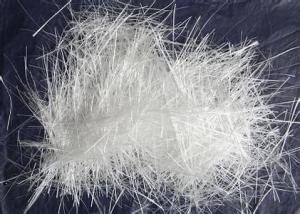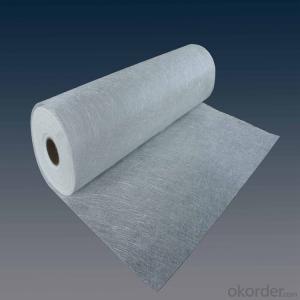Chopped Strand Fiberglass Mat (CSM) - 2024 Fiberglass Powder Chopped Stand Mats
- Loading Port:
- Tianjin
- Payment Terms:
- TT OR LC
- Min Order Qty:
- 100 m.t.
- Supply Capability:
- 20000 m.t./month
OKorder Service Pledge
Quality Product, Order Online Tracking, Timely Delivery
OKorder Financial Service
Credit Rating, Credit Services, Credit Purchasing
You Might Also Like
Quick Details
| Technique: | Chopped Strand Fiberglass Mat (CSM) | Dimensions: | 450gsm | Mat Type: | Continuous Filament Mat |
| Fiberglass Type: | E-Glass | Softness: | softness | Place of Origin: | Jiangxi, China (Mainland) |
| Brand Name: | cnbm | Model Number: | 450gsm | color: | white |
| fiberglass type: | E glass | product: | e-glass powder chopped stand mats | binder: | powder or emulsion |
| width: | 1040 or 1270mm, as your requirement | weight: | 30 or 45kg/roll | paper tube diameter: | 90mm |
| outer diameter of roll: | 256mm | packing: | plastic film+carton box + pallet |
Packaging & Delivery
| Packaging Details: | plastic film+carton box + pallet |
| Delivery Detail: | 15-20days |
Specifications
1.e-glass powder chopped stand mats
2.binder:power or emulsion
3.width:1040mm or 1270mm
4.weight:450gsm
Picture

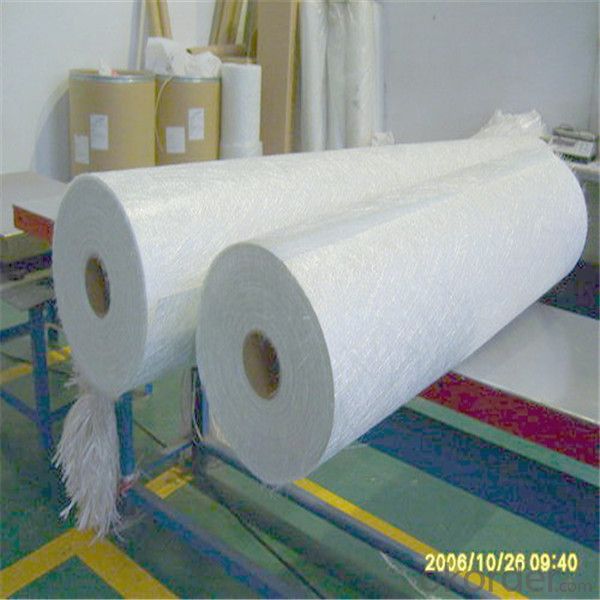




- Q: How is the flexural strength of fiberglass chopped strand composites determined?
- The flexural strength of fiberglass chopped strand composites is determined through a standardized testing method called the three-point bending test. This test involves applying a load to a specimen supported at two points, and measuring the maximum stress the specimen can withstand before breaking.
- Q: Does fiberglass chopped strand have any moisture resistance?
- Yes, fiberglass chopped strand does have some level of moisture resistance. The glass fibers used in its composition are inherently moisture-resistant, and the presence of a resin binder further enhances its resistance to moisture. However, it is worth noting that prolonged exposure to moisture can eventually degrade its performance, so proper sealing or coating is recommended for long-term moisture resistance.
- Q: Can fiberglass chopped strand be used in pipe manufacturing?
- Indeed, the utilization of fiberglass chopped strand is feasible in the production of pipes. This particular material, fiberglass chopped strand, possesses a wide range of applications, one of which is pipe manufacturing. It boasts numerous benefits, such as its exceptional strength, resistance to corrosion, and lightweight characteristics. By combining the chopped strands with resin and employing various manufacturing techniques like filament winding or pultrusion, it becomes possible to shape the material into a pipe form. Consequently, the resulting fiberglass pipe exhibits outstanding mechanical properties, including remarkable tensile strength and stiffness, as well as resistance to both chemicals and extreme temperatures. Furthermore, fiberglass pipes are renowned for their durability and minimal maintenance requirements, making them a favored choice in industries such as oil and gas, chemical processing, and wastewater treatment.
- Q: Is fiberglass chopped strand resistant to corrosion?
- No, fiberglass chopped strand is not inherently resistant to corrosion.
- Q: Is fiberglass chopped strand suitable for sports equipment manufacturing?
- Fiberglass chopped strand is indeed suitable for the manufacturing of sports equipment. This material, known for its lightweight, durability, and strength, is widely used in the production of various sports equipment such as boats, kayaks, surfboards, hockey sticks, and helmets. The chopped strand form of fiberglass is composed of small glass fibers that are arranged randomly and can be effortlessly combined with resin to form a composite material. This characteristic allows for flexibility and customization during the manufacturing process, as the chopped strand can be easily molded and shaped to meet the specific requirements and designs of different sports equipment. Moreover, fiberglass boasts exceptional tensile strength, impact resistance, and dimensional stability, making it the ideal choice for sports equipment that must endure rigorous use and potential impacts.
- Q: Is fiberglass chopped strand suitable for automotive body panels?
- Yes, fiberglass chopped strand is suitable for automotive body panels. Fiberglass is a versatile material that offers several advantages for automotive applications. It is lightweight, which helps improve fuel efficiency and overall vehicle performance. Fiberglass also has excellent strength-to-weight ratio, making it a durable option for body panels that can withstand impacts and resist deformation. Chopped strand fiberglass is particularly suitable for automotive body panels due to its ability to be easily molded and shaped into complex designs. The chopped strands of fiberglass are mixed with a resin matrix and then formed using various molding techniques such as compression molding or injection molding. This allows for the creation of body panels with precise dimensions and contours, ensuring a seamless fit on the vehicle. Furthermore, fiberglass has good corrosion resistance, which is crucial for automotive applications where the body panels are exposed to various weather conditions and environmental factors. It also provides good thermal and electrical insulation properties, adding to its suitability for automotive body panels. Overall, fiberglass chopped strand is a suitable material for automotive body panels, offering lightweight, durability, ease of molding, and resistance to corrosion. It has been widely used in the automotive industry for many years and continues to be a popular choice for manufacturers.
- Q: Can fiberglass chopped strand be used in medical applications?
- Yes, fiberglass chopped strand can be used in certain medical applications. It is commonly used as a reinforcing material in composites used for medical devices such as prosthetics, orthopedic implants, and surgical instruments. However, its specific use will depend on the requirements and regulations of each individual medical application.
- Q: How does the fiber volume fraction affect the performance of fiberglass chopped strand?
- The fiber volume fraction in fiberglass chopped strand directly affects its performance. Higher fiber volume fractions generally result in improved mechanical properties, such as increased strength, stiffness, and impact resistance. This is because a higher volume fraction means more fibers are present, leading to enhanced load-bearing capacity and better distribution of stress. Additionally, a higher fiber volume fraction can also improve the dimensional stability and thermal properties of fiberglass chopped strand, making it more suitable for applications where these characteristics are crucial.
- Q: What are the surface finish options for fiberglass chopped strand?
- The surface finish options for fiberglass chopped strand include smooth, textured, matte, and glossy finishes.
- Q: Can fiberglass chopped strand be used in reinforcing concrete?
- Certainly! Fiberglass chopped strand is indeed applicable for reinforcing concrete. It is a reinforcement material comprising small strands of fiberglass. Typically, these strands are incorporated into concrete mixtures to enhance the strength and durability of the resulting concrete structure. The addition of fiberglass chopped strand to concrete aids in evenly distributing the load and stress throughout the structure. This reinforcement material offers increased tensile strength, impact resistance, and crack control to the concrete. Additionally, it enhances the overall performance and lifespan of the concrete, rendering it more resistant to environmental factors like moisture, temperature fluctuations, and chemical exposure. During the batching process, fiberglass chopped strand can be easily mixed into the concrete. It finds common usage in various concrete applications, including precast concrete products, cast-in-place concrete, and concrete overlays. It particularly excels in reinforcing thin sections of concrete, such as slabs and overlays, where the likelihood of cracking and shrinkage is higher. In summary, fiberglass chopped strand presents a reliable and cost-effective solution for reinforcing concrete. Its utilization can significantly enhance the strength and durability of concrete structures, rendering them more resilient against different forms of damage while extending their lifespan.
Send your message to us
Chopped Strand Fiberglass Mat (CSM) - 2024 Fiberglass Powder Chopped Stand Mats
- Loading Port:
- Tianjin
- Payment Terms:
- TT OR LC
- Min Order Qty:
- 100 m.t.
- Supply Capability:
- 20000 m.t./month
OKorder Service Pledge
Quality Product, Order Online Tracking, Timely Delivery
OKorder Financial Service
Credit Rating, Credit Services, Credit Purchasing
Similar products
Hot products
Hot Searches
Related keywords

















